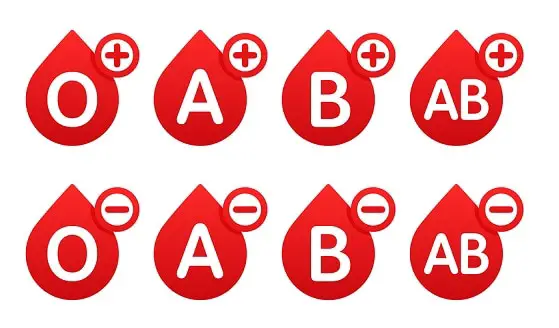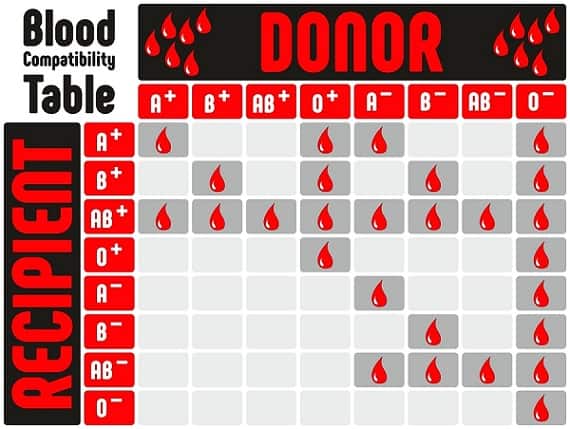A negative blood group is one where the red blood cells lack Rhesus antigen on their surfaces.
As we know, there are 4 types of blood groups broadly like A, B, AB & O group in humans. These are classified based on the presence of respective antigens on the RBC surface.
Similarly, there is one more antigen called the Rhesus factor. Based on this, people are classified as Rh+ if rhesus antigen present and Rh- if absent.
And about 85% of the human population is Rh+ve. And the remaining 15% is Rh-ve.
Hence, the blood groups are of 8 types as shown below

A person with one blood group cannot receive blood from others randomly. But, he needs a select blood group from the select persons.
If blood is administered from the random collection, the recipient would be susceptible to the immune reactions which can be fatal.
Hence, blood from a particular group is required for transfusion. So, blood is collected in advance and stored in blood banks for emergency use.
The blood group of a person is identified before blood transfusion by the immune reactions.
These groups are bifurcated based on the Rh factor. Those with Rh-positive blood group are classified as the A+ve, B+ve, AB+ve, O+ve and the Rh-Negative blood group is differentiated as A-ve, B-ve, AB-ve, O-ve groups.
So the underlying difference of positive (+) and negative (-) arises due to the Rhesus antigen Rh or rhesus factor or type D-antigen.
If the blood of a person has the rhesus factor, he is assigned the blood group with a positive sign on the right like B+, A+, O+, etc..
If this factor is not present in his blood, he is assigned a blood group with a negative sign as B-, A-, O- etc.
So for blood transfusion, the donor is selected carefully as in the chart below

When a blood transfusion is done with incompatible blood groups, there is a severe reaction inside the body leading to death. This instantaneous response occurs due to conflicting blood groups like A, B, AB & O are transfused.
But on the other hand, the incompatibility with positive and negative groups doesn’t show immediate reactions but shows a reaction after any subsequent incompatible exposures.
Rhesus Rh factor is again of different types like C, D, E, c, d, and e. Any person with C antigen doesn’t have a c-antigen, and that with D-antigen doesn’t have d antigen and similar in E also. So a person can have a blood group with any of the above rhesus factors but Rh-D is widely prevalent, and hence persons with Rh-D are termed as +ve, and those without Rh-D are termed as -ve.
Rh factor and pregnancy: The Rh incompatibility occurs when the mother has an Rh-ve blood group and if the baby in the womb has a Rh+ve group. The Rh- mother has no Rh+ antigen in her blood cells but can generate them. If the baby inherits Rh+ antigen from the father, the placenta protects the baby from those antigens.
But at the time of delivery, if few fetal RBC’s enter the mother’s blood circulation, it leads to the development of anti Rh+ antibodies. If the same mother conceives another baby, those anti Rh+ antibodies present would cross the placenta and cause damage to pregnancy. In severe cases, the child could die of anemia. In nonserious condition, the baby could survive if anemia is corrected.
But currently, such cases are minimal as the Rh- mothers are given anti-Rh+ antibodies to mothers within 72 hours of delivery. This treatment inhibits the mother’s blood from developing such antibodies.